Powet Alphabet: G is for Grand Theft Auto
by William Talley, filed in Articles, Games, Powet Alphabet on Feb.13, 2011
Since the alphabet is the building block of our language, the Powet Alphabet is the building block of what makes us geeks.
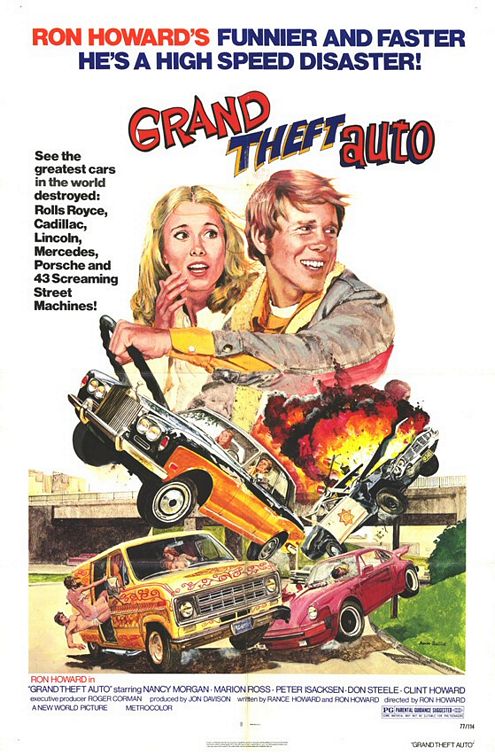
Grand Theft Auto is a 1977 film that marked former child actor Ron Howard’s debut as a director. Howard stepped in the role of a young man who runs away with his girlfriend when her rich and overprotective father tries to hook her up with a rich young socialite. The Grand Theft Auto part of the film comes into play when the girlfriend steals her father’s Rolls-Royce, as the two have their sights set on a Vegas wedding. The socialite puts a bounty on his head, and hi-jinks ensue.
Grand Theft Auto is no laughing matter however. In 2005 alone, there were approximately 1.2 million reported cases of motor vehicle theft, costing an estimated $7.6 billion in property losses. As you can see, it is a very serious crime in any state, along with most of the civilized world. Offenders can expected to spend up to 15 years or more in prison, depending on the severity of the crime.
The GTA I’m referring to is neither a Ron Howard flick or the real life crime. It is a game franchise created by DMA Designs under the direction of Lemmings creator David Jones. The games cast players in the shoes of criminals, and as the title suggests, they must commit Grand Theft Auto (along with other crimes) to get ahead. The series has spanned 10 separate installments and 4 expansion packs. Its formula of open-world gaming and criminal mayhem has earned the franchise a special place on the shelves of many a gamer. Yet, GTA remains one of the most controversial franchises in gaming, and not just for its adult content.
No one gaming franchise, save for Final Fantasy, has polarized the gaming community more than Grand Theft Auto. Fans of the series enjoy the massive amounts of carnage and mayhem they are able to inflict, as well as the open-ended structure of the game that allows them to do whatever they want, when they want to do it. Critics of the series see GTA as a one-trick pony, and fail to see any of the franchise’s innovations, and in some cases take issue with the sex and violence in the game, believing that the mature content takes away from the games’ main focus. Finally, there are the irrational fanboys who have no real criticism to offer, and simply hate it just for the sake of spurning anything that’s popular and/or isn’t from Japan. But who cares what they think anyway?
The Beginning
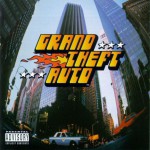 The original Grand Theft Auto was a simple looking title with cartoon graphics and a top-down view. Taking control of one of several selectable criminals, you had to cause some serious mayhem to make a target number of points to get through each level. You can even complete missions in order to increase the amount of points you earned. The game was set in three cities, Liberty City (based on New York), Vice City (based on Miami), and San Andreas (based on San Francisco). An expansion pack added missions that were set in London England during the 1960s. The game was originally set to be called Race’N’Chase, but thankfully the guys at DMA knew better. While it didn’t seem all that impressive when it was first released, and the tank-like controls made things a hindrance, it was the beginning of a hit gaming franchise.
The original Grand Theft Auto was a simple looking title with cartoon graphics and a top-down view. Taking control of one of several selectable criminals, you had to cause some serious mayhem to make a target number of points to get through each level. You can even complete missions in order to increase the amount of points you earned. The game was set in three cities, Liberty City (based on New York), Vice City (based on Miami), and San Andreas (based on San Francisco). An expansion pack added missions that were set in London England during the 1960s. The game was originally set to be called Race’N’Chase, but thankfully the guys at DMA knew better. While it didn’t seem all that impressive when it was first released, and the tank-like controls made things a hindrance, it was the beginning of a hit gaming franchise.
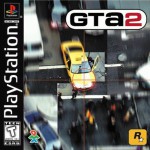 Things got off the ground with GTA 2. While it shared the same top-down view with GTA 1, there were a number of new features. There were several gangs in the city, and players had the option of completing missions for them, increasing their standing with one gang while decreasing their status with another. Players could also engage in side missions, such as taxi rides and car thefts. Pedestrians could now be interacted with and behaved as non-player characters, getting into fights, riding in taxis, and even pulling muggings and carjacks. Radio stations played different genres of music, from hip hop to country. Later games in the series featured a licensed soundtrack and real-life radio personalities as Djs. GTA 2 laid the foundation for many of the ideas and game mechanics seen in GTA 3 onward.
Things got off the ground with GTA 2. While it shared the same top-down view with GTA 1, there were a number of new features. There were several gangs in the city, and players had the option of completing missions for them, increasing their standing with one gang while decreasing their status with another. Players could also engage in side missions, such as taxi rides and car thefts. Pedestrians could now be interacted with and behaved as non-player characters, getting into fights, riding in taxis, and even pulling muggings and carjacks. Radio stations played different genres of music, from hip hop to country. Later games in the series featured a licensed soundtrack and real-life radio personalities as Djs. GTA 2 laid the foundation for many of the ideas and game mechanics seen in GTA 3 onward.
The GTA 3 era
 While GTA 1 or 2 were violent in controversial, it was GTA 3 that gamers would start taking notice. GTA 3 ditched the top-down view of its predecessors in favor of a third-person view, and would be more story driven than its predecessors. Playing as a nameless, faceless henchman with no personality or dialogue of his own (later in the series we would learn that his name is Claude), you set out to get revenge on your former girlfriend and best friend who ditched you and left you for dead after a botched bank robbery. You had to make deals with the various gangs around the city, and things became increasingly complex as they double crossed each other. The game took place in Liberty City, which was inspired by New York. GTA 3 was followed up by Vice City, a game which showed players everything that was cool about the 80s. Playing as Tommy Vercetti, a hitman recently released from prison, you try to make a drug deal for your mafia bosses. However, when things go wrong, you decide to take things over and build a power base of your own. GTA Vice City began the series’ tradition of using Hollywood-caliber talent for character voices. Vercetti himself was voiced by Goodfellas’s Ray Liotta. Burt Reynolds, James Woods, Peter Fonda, Samuel L Jackson, and even pornstar Jenna Jameson were also featured in installments of the series.
While GTA 1 or 2 were violent in controversial, it was GTA 3 that gamers would start taking notice. GTA 3 ditched the top-down view of its predecessors in favor of a third-person view, and would be more story driven than its predecessors. Playing as a nameless, faceless henchman with no personality or dialogue of his own (later in the series we would learn that his name is Claude), you set out to get revenge on your former girlfriend and best friend who ditched you and left you for dead after a botched bank robbery. You had to make deals with the various gangs around the city, and things became increasingly complex as they double crossed each other. The game took place in Liberty City, which was inspired by New York. GTA 3 was followed up by Vice City, a game which showed players everything that was cool about the 80s. Playing as Tommy Vercetti, a hitman recently released from prison, you try to make a drug deal for your mafia bosses. However, when things go wrong, you decide to take things over and build a power base of your own. GTA Vice City began the series’ tradition of using Hollywood-caliber talent for character voices. Vercetti himself was voiced by Goodfellas’s Ray Liotta. Burt Reynolds, James Woods, Peter Fonda, Samuel L Jackson, and even pornstar Jenna Jameson were also featured in installments of the series.
 GTA San Andreas took us to the early 90s, where gangsta rap was on the rise. Playing as Carl “CJ” Johnson, you return to San Andreas from Liberty City upon hearing news of your mother’s death. This time, you weren’t restricted to just one city however, San Andreas was an entire state inspired by California, Nevada, and even parts of Arizona. There were three major cities in the game: Los Santos, which was a dead ringer for LA, Las Venturas, a gambler’s paradise similar to Reno, and San Fierro, which took its inspiration from San Francisco. Just as Vice City had provided a snapshot of the 80s, San Andreas was a microcosm of the gang culture of the west coast during the 90s. However, there was so much more to the game than that. Before you finished the game, you would fly on jetpacks, pull off an elaborate casino heist, and even fly several types of aircraft. An RPG-type stat building element allowed players to increase their abilities, and even rewarded players for eating right and getting exercise.
GTA San Andreas took us to the early 90s, where gangsta rap was on the rise. Playing as Carl “CJ” Johnson, you return to San Andreas from Liberty City upon hearing news of your mother’s death. This time, you weren’t restricted to just one city however, San Andreas was an entire state inspired by California, Nevada, and even parts of Arizona. There were three major cities in the game: Los Santos, which was a dead ringer for LA, Las Venturas, a gambler’s paradise similar to Reno, and San Fierro, which took its inspiration from San Francisco. Just as Vice City had provided a snapshot of the 80s, San Andreas was a microcosm of the gang culture of the west coast during the 90s. However, there was so much more to the game than that. Before you finished the game, you would fly on jetpacks, pull off an elaborate casino heist, and even fly several types of aircraft. An RPG-type stat building element allowed players to increase their abilities, and even rewarded players for eating right and getting exercise.
 Various handheld spinoffs revisited GTA 3 and Vice City. GTA Advance took players back to Liberty City as they played as a man out to avenge his partner in crime. Liberty City Stories and Vice City Stories took players back to Liberty City and Vice City in two PSP games. Although they didn’t do much we haven’t already seen in GTA, they were still solid experiences, and for PSP gamers, they were both must-buy games.
Various handheld spinoffs revisited GTA 3 and Vice City. GTA Advance took players back to Liberty City as they played as a man out to avenge his partner in crime. Liberty City Stories and Vice City Stories took players back to Liberty City and Vice City in two PSP games. Although they didn’t do much we haven’t already seen in GTA, they were still solid experiences, and for PSP gamers, they were both must-buy games.
GTA IV
 Rockstar knew that it’s flagship franchise had to reinvent itself for its next installment. And they did just that with GTA IV. Featuring an all new Liberty City, an all new graphics engine, and all new gameplay, players stepped in the shoes of Niko Bellic, an Eastern European immigrant hoping to make a new life for himself in Liberty City. However, old woulds from the past, along with his cousin’s increasing debt, force him to do some unsavory things. While the gameplay was simplified from GTA San Andreas, GTA IV contained several new features of its own. You could meet with friends, surf the internet, and use your cell phone to get the heads-up on missions. There were two expansions to the game: The Lost and Damned, and The Ballad of Gay Tony. The former stepped into the shoes of a member of a biker gang as he tries to keep things together, while the latter had players stepping into the sores of one of the aforementioned Tony’s henchmen, as he helps his boss keep his business afloat. GTA Chinatown Wars, a Nintendo DS and PSP spinoff, casts players as Huwang Lee, the son of a recently deceased Triad leader who sought to avenge his father’s death. It took place in the new Liberty City of GTA IV, although one of the islands were cut to make it fit on the cartridge/UMD.
Rockstar knew that it’s flagship franchise had to reinvent itself for its next installment. And they did just that with GTA IV. Featuring an all new Liberty City, an all new graphics engine, and all new gameplay, players stepped in the shoes of Niko Bellic, an Eastern European immigrant hoping to make a new life for himself in Liberty City. However, old woulds from the past, along with his cousin’s increasing debt, force him to do some unsavory things. While the gameplay was simplified from GTA San Andreas, GTA IV contained several new features of its own. You could meet with friends, surf the internet, and use your cell phone to get the heads-up on missions. There were two expansions to the game: The Lost and Damned, and The Ballad of Gay Tony. The former stepped into the shoes of a member of a biker gang as he tries to keep things together, while the latter had players stepping into the sores of one of the aforementioned Tony’s henchmen, as he helps his boss keep his business afloat. GTA Chinatown Wars, a Nintendo DS and PSP spinoff, casts players as Huwang Lee, the son of a recently deceased Triad leader who sought to avenge his father’s death. It took place in the new Liberty City of GTA IV, although one of the islands were cut to make it fit on the cartridge/UMD.
Grand Theft Controversy
Due to its subject matter, the GTA series was no stranger to controversy. Video games in the 90s were already taking a bad rap due to violent content, and GTA’s subject matter, centered around crime, pushed things over the edge. Things got even worse as the 90s gave way to the 2000s, as our nation was rocked by the Columbine shootings and the 9/11 terrorist bombings. When GTA III was released, politicians, talk-show hosts, and faux political activists sought opportunity. After all, the suits just discovered that there was this horrible game that allowed players to shoot people and kill cops! Hell, players could even pick up a hooker, have sex (or rather watch as a vehicle rocked back and forth) with her, and then kill her and take your money back. Throughout the next few years, things would get worse, as several crimes would be blamed on the series, similar to the Columbine killings were blamed on Doom. Among them was the case of Devin Moore, who was 17 years old when he shot and killed three Alabama police officers in 2003 while being questioned about a stolen vehicle. Those same politicians, talk show pundits, and political activists, frequently aided by so-called “experts” (usually people who never played a video game in their life that just so happened to have a PHD in psychology), were drawn to it like sharks to blood. One of these particular politicians was one Jack Thompson. A right-wing lawyer from Florida, Jack Thompson took it upon himself to either campaign against the video game industry, hip hop music, facebook, and pretty much anything else that’s popular. Jack Thompson represented the aforementioned Mr. Moore in a 2005 lawsuit against Take-Two interactive, Sony Computer Entertainment, and the Japser branches of Gamestop and Wal-mart, claiming that it was Grand Theft Auto that made him perform his actions. Mr, Thompson filed a September 2006 lawsuit against Take Two, Sony, and Cody Posey, who shot and killed his father, stepmother, and stepsister on behalf of the victims’ families, alleging once again, that GTA led to the killings. For the sake of brevity and because I refuse to give this man any more light than I already have, I’m not going to discuss all the incidents involving Jack Thompson, but suffice it to say that his antics got him disbarred in 2008. As for the crimes blamed on GTA, I won’t discuss them either (as that is another subject entirely), but I will say this. If it’s true that video game violence leads to real world disasters, then shouldn’t there be more shooting rampages, seeing as how not only GTA, but games such as Doom, Mortal Kombat, and Duke Nukem sell in the millions?
Some of the controversies against the GTA series were a bit more merited. Among them a controversy with Vice City. A part of the game involves a war between Haitian gang members and Cuban gang members, and members of both the Haitian and Cuban communities in Florida boycotted the game claiming that some of the dialogue in the game promotes racism against both groups. Although this was blown out of proportion, Rockstar sent a press release stating that they agreed with the concerns of both groups, and they never intended to promote any bigotry in the title. In 2004, an altered version of Vice City was released, with several choice lines of dialogue removed, and the controversy seemed to have died down. Another such controversy would not blow over so easily.
 In San Andreas, players could start a relationship with several girlfriends, and after charming them enough, you gained certain perks, such as being able to keep your weapons after being killed or arrested. Harmless right? Sure. However, the original version had your girlfriends inviting you upstairs for “Hot Coffee”, which was a simulated sex minigame (although there was no nudity present). Apparently this was too risque even for Rockstar, so it was cut from the game. Or so we thought. You see, when the PC version of San Andreas was released, a mod was revealed that unlocked the uh… “Hot Coffee” minigame. Rockstar denied that they placed it into the game. However, hackers used the Pro Action Replay device to unlock the minigame in the console versions, something which would considerably be harder to do if Rockstar had never put it into the game. Parents, Teachers, and the ESRB went berserk, lawsuits were filed against Rockstar and Take-Two, and retailers either re-rated the game AO or had the game pulled from the shelves entirely (until it was re-released months later with the content removed). Of course this was more overreaction as number one, the game was already rated M for Mature, so it’s not as if kids are supposed to be playing the game to begin with, number two, there was no nudity during the minigame, and number 3, you need a third party hack to even access it. I’m not letting Rockstar off the hook either. If they weren’t going to include it in the game, all they had to do was remove the offending code, and they could have avoided this whole thing. This scandal was basically a result of laziness of their part.
In San Andreas, players could start a relationship with several girlfriends, and after charming them enough, you gained certain perks, such as being able to keep your weapons after being killed or arrested. Harmless right? Sure. However, the original version had your girlfriends inviting you upstairs for “Hot Coffee”, which was a simulated sex minigame (although there was no nudity present). Apparently this was too risque even for Rockstar, so it was cut from the game. Or so we thought. You see, when the PC version of San Andreas was released, a mod was revealed that unlocked the uh… “Hot Coffee” minigame. Rockstar denied that they placed it into the game. However, hackers used the Pro Action Replay device to unlock the minigame in the console versions, something which would considerably be harder to do if Rockstar had never put it into the game. Parents, Teachers, and the ESRB went berserk, lawsuits were filed against Rockstar and Take-Two, and retailers either re-rated the game AO or had the game pulled from the shelves entirely (until it was re-released months later with the content removed). Of course this was more overreaction as number one, the game was already rated M for Mature, so it’s not as if kids are supposed to be playing the game to begin with, number two, there was no nudity during the minigame, and number 3, you need a third party hack to even access it. I’m not letting Rockstar off the hook either. If they weren’t going to include it in the game, all they had to do was remove the offending code, and they could have avoided this whole thing. This scandal was basically a result of laziness of their part.
Grand Theft Imitation
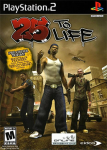 It’s often said that imitation is the sincerest form of flattery. If this is the case, developers must love Rockstar. With the success of GTA III, more developers began to create games that borrowed mechanics from the series. At best, many of these games borrowed GTA’s more successful game mechanics and did innovative things with them while at worst, many of these games were either direct ripoffs which added little in to the formula, or relied on the shock value of sex, drugs, and profanity to sell themselves. For every Vice City of San Andreas, we got hundreds of 25 to Lifes, True Crimes, and Beat Downs. Even Capcom and Midway tried to remake the games Final Fight and Narc with a new GTA-inspired look just to see them both failed miserably.
It’s often said that imitation is the sincerest form of flattery. If this is the case, developers must love Rockstar. With the success of GTA III, more developers began to create games that borrowed mechanics from the series. At best, many of these games borrowed GTA’s more successful game mechanics and did innovative things with them while at worst, many of these games were either direct ripoffs which added little in to the formula, or relied on the shock value of sex, drugs, and profanity to sell themselves. For every Vice City of San Andreas, we got hundreds of 25 to Lifes, True Crimes, and Beat Downs. Even Capcom and Midway tried to remake the games Final Fight and Narc with a new GTA-inspired look just to see them both failed miserably.
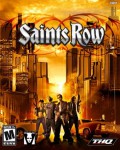 However, there were some good games that used parts of GTA’s design, and in some cases, actually improved upon them, and not all of them relied on sex, drugs, or even the mafia. Spider-man 2 took place in an open-world city that literally allowed players to become Spider-man as he swung around New York. Mercenaries: Playground of Destruction had players exploring war-torn North Korea in tanks and helicopters, and pretty much anything that isn’t land or mountains can be destroyed. Crackdown placed players in the shoes of a superhero with upgradable skills. Players had more fun fooling around with their abilities than actually playing the missions. Of course there were successful GTA-like games that utilize an organized crime setting as well. Scarface was basically Vice City, except that players stepped into the shoes of the drug kingpin Tony Montana and make coke deals as he attempted to rebuild his empire. Saint’s Row used the Havok physics engine to allow players to create some fun moments, especially when performing the game’s activities. The amount of customization options available made things even better.
However, there were some good games that used parts of GTA’s design, and in some cases, actually improved upon them, and not all of them relied on sex, drugs, or even the mafia. Spider-man 2 took place in an open-world city that literally allowed players to become Spider-man as he swung around New York. Mercenaries: Playground of Destruction had players exploring war-torn North Korea in tanks and helicopters, and pretty much anything that isn’t land or mountains can be destroyed. Crackdown placed players in the shoes of a superhero with upgradable skills. Players had more fun fooling around with their abilities than actually playing the missions. Of course there were successful GTA-like games that utilize an organized crime setting as well. Scarface was basically Vice City, except that players stepped into the shoes of the drug kingpin Tony Montana and make coke deals as he attempted to rebuild his empire. Saint’s Row used the Havok physics engine to allow players to create some fun moments, especially when performing the game’s activities. The amount of customization options available made things even better.
Even Rockstar used its own GTA blueprint when making some of its games. Bully had players exploring a school setting and criminal activities of GTA were replaced by high school hi-jinks. Red Dead Redemption had players exploring an open world western frontier. Latter installments of Midnight Club had players driving around an open world city when they weren’t participating in races.
Weather anyone wants to admit it or not, GTA, and perhaps Rockstar games in general, has contributed a lot more to video gaming than people realize. Heck, GTA has contributed a lot more to pop culture than people realize. When you have games such as Tony Hawk and Jak and Daxter adapting an open-world format to enhance their gameplay, or characters who smoke weed and drop f-bombs in a lame attempt to look ‘extreme’, then you know you’ve made an impact. Thankfully Rockstar continues to press on with their flagship series, and it will be interesting to see where it goes next.


 PS3
PS3
 Famicom Dojo
Famicom Dojo KEEP PLAYING
KEEP PLAYING KEEP PLAYING: Rewind
KEEP PLAYING: Rewind Powet Toys
Powet Toys Powetcast
Powetcast Hitchhiker's Guide POWETcast
Hitchhiker's Guide POWETcast















